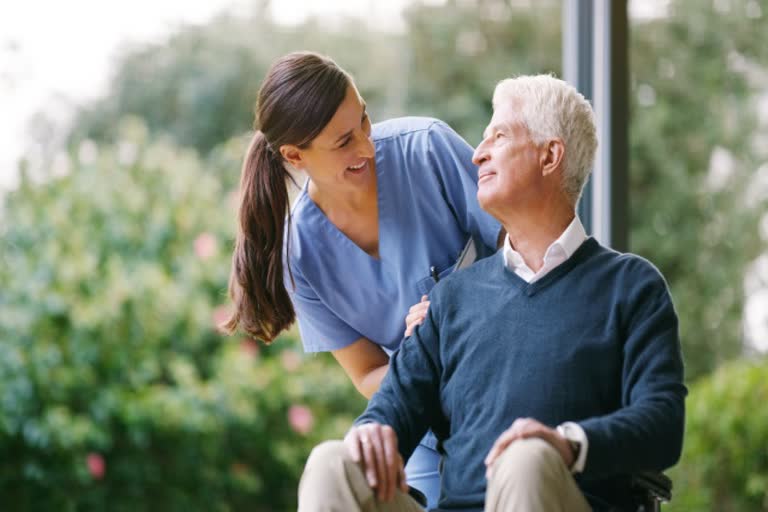Enhancing your lung capacity by appropriate physiotherapy and breathing exercises helps. Controlled breathing helps you to relax, try to use as little effort as possible, and make your breaths slow, relaxed and smooth. Paced breathing is useful when carrying out activities that might take more effort. Break the activity down into smaller parts to make it easier to carry out. Whenever you walk, you are going to exercise your lung as well and this goes a long way in strengthening the lungs.
Most commonly, doctors prescribe that you do spirometry at home. This is one way of getting back your lung function, if not then at least assist it in a quick recovery. All these practices help a great deal in improving oxygenation and increasing your lung capacity.
Positions that aid recovery
- Till you attain an adequate amount of oxygen saturation independent of oxygen substitution in any manner if you are able to continue maintaining prone position especially during the night because at the night you require more hours of proper oxygen capacity rather than during the day.
- Immediately after your meals or after a full stomach, the prone position should be avoided but you can lie prone when the stomach is empty. Patients who complain of weakness when sitting would definitely be helped by maintaining a prone position.
- Maintain comfort when assuming any position.
- Never lie down immediately after eating. Remain in a propped-up position for at least 2- 2 and half hours after eating. Having back support helps in preventing acid reflux problems to a great extent. Breathlessness and cough get minimized, lungs can draw air more comfortably, oxygen capacity gets better.
Also Read: Post-COVID Lung Care and Rehabilitation
Controlled eating
A good amount of breakfast significantly filling their stomachs. Lunch should be reasonable but a little less in amount as compared to the breakfast and dinner should be very minimal on a lighter side and easy to digest. This pattern can vary from region to region and choice may differ but as a general rule, more proteins, less amount of fatty oily greasy things, a reasonable amount of carbohydrates if they are non-diabetic. If they are diabetic they should stick to their prescribed diet prior to covid. Similarly, a patient with compromised kidney function, those with hypertension should observe diets as prescribed.
When to consult your doctor:
A patient is generally given discharge when they are able to be stable at an oxygen level of 95 %. So, in case they are unable to maintain this level, they should immediately consult a doctor. Also, you need to panic if the oxygen saturation dips for a moment or so. you need to seek medical attention only if it is consistently low. Those patients who have a pre-existing lung condition or have been on a home support system need to follow the advice of their doctor.
General advice: If you are in the habit of consuming alcoholic beverages, never do so just before going to sleep. Adequate water and fiber in the diet can help prevent constipation.
Getting reinfection: It is very rare to get re-infected within the first 3 months. This is because patients are advised to maintain social distancing, observe hand hygiene, cough etiquette, wear masks. Also, there are antibodies produced in our body that last sufficiently for about 3 months. Even if you develop reinfection due to the double variant or so, the intensity of damage caused by the immediate infection is going to be less as compared to a new infection.
Start back your exercise regime post-recovery is generally avoided for the first 6 weeks due to the thromboembolic phenomena that have been noticed. There is another association of worsening or higher incidence of organ dysfunction like the brain and the heart secondary to sequelae of viral infection like the development of irregular heart rhythm, seizure activity, delirium, stress, etc. therefore it is recommended that patients do not get into the stringent mode of exercises for the first 6 weeks of recovery and should always increase their exercises in a graded manner.
At the time of discharge, we normally do an assessment of the patient by doing blood tests, a physical examination. The do’s and don’ts are explained to the patient and the most important is the prevention of clot formation. Also, the reinitiation of previous medications needs to be done at the time of discharge. All the risk factors like increased blood pressure, high cholesterol levels, etc are taken into consideration while regulating the medications.
The next follow up:
First after 2 weeks from discharge and then after 2 months of discharge in normal circumstances. This is again as per the patient's requirement.
For more queries, contact Dr.Rakesh Vukkala at vukkala@gmail.com


